Interview with Jonathan Hill: Cartoonist, Illustrator, Educator
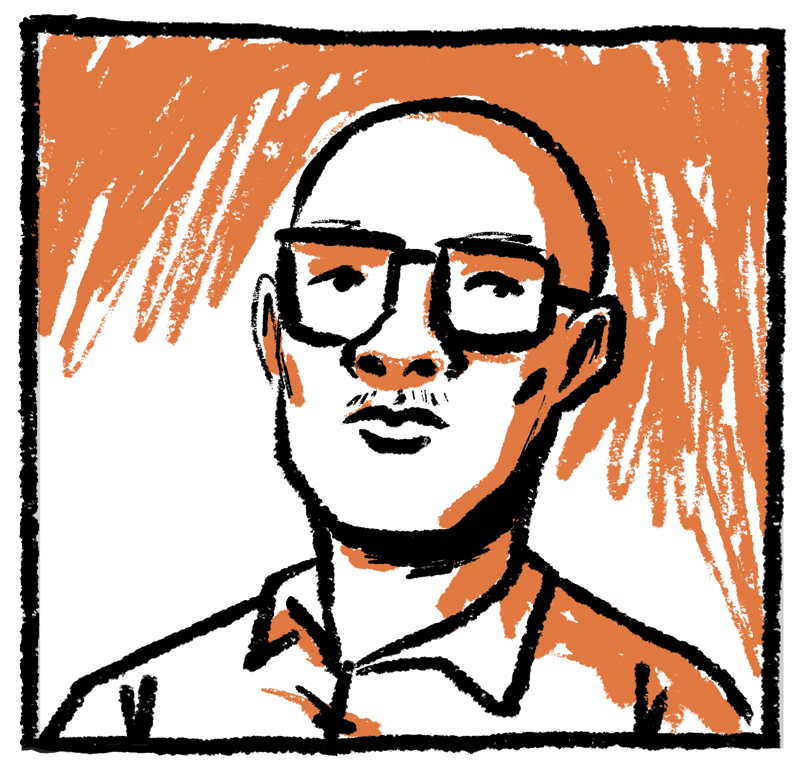
This month, I had the pleasure of interviewing Jonathan Hill, Vietnamese-American cartoonist, illustrator, and educator. I’d been following Jonathan for a few years on Twitter when I got the chance to meet him at Short Run, Seattle’s comix and arts festival, in November 2017, and at Portland Book Festival right after. Upon meeting him, Jonathan immediately struck me as a kindred spirit—an artist who’s dedicated to honing his craft, teaching his craft, and fostering the creative process in others—and it made me want to know more about him, his creative background, and how he got to where he is today.
Peg: At what age did you know you wanted to be a working artist? And how did you arrive at that decision?
Jonathan: I guess the moment I decided to go to art school? Honestly, looking back, I don’t know that my brain even really thought that far ahead to what working as an artist would be like.
It wasn’t a lifelong dream of mine. When it came time to go through the whole college application process, I couldn’t think of anything else to do. I have always only been good at one thing (though that’s debatable) and could only see myself continuing to do that. I was also in an incredibly privileged position to be the oldest of three siblings and able to have my pick of where and what I would study.
Here’s the thing—I was an okay student in high school, A’s in the subjects I really liked, and then a lot of B’s, no C’s or anything—but I didn’t really apply myself as much as I could have. But when I went to art school and had the opportunity to study this thing that I had done my whole life and to really dig deep…I committed completely. I was totally on board and 100% into it.
I know there’s a lot of pros and cons to art school, the main con being the cost. It’s completely unnecessary to be a professional artist. You can self-teach yourself everything you need. But for someone like me, I needed it to find what I wanted to do, to set me on the right path. I wasn’t motivated enough to do any of that on my own.
P: I think many people will be relieved when they read this. Not every artist knew they wanted to work as an artist when they were younger. It’s okay to start when you’re ready to start. That said, when you were ready, you were really ready. In fact, you were valedictorian of Savannah College of Art & Design (SCAD) in 2003 with a degree in Sequential Art. That’s awesome. Can you explain what ‘sequential art’ is?
J: Thanks! It’s a fun thing to say I was valedictorian, but it just means I was good at school (ha ha). Sequential Art is a term coined by comics legend Will Eisner. It’s a fancy way of saying comics, or any other visual storytelling through a sequence of images. Basically, I have a degree in comics.
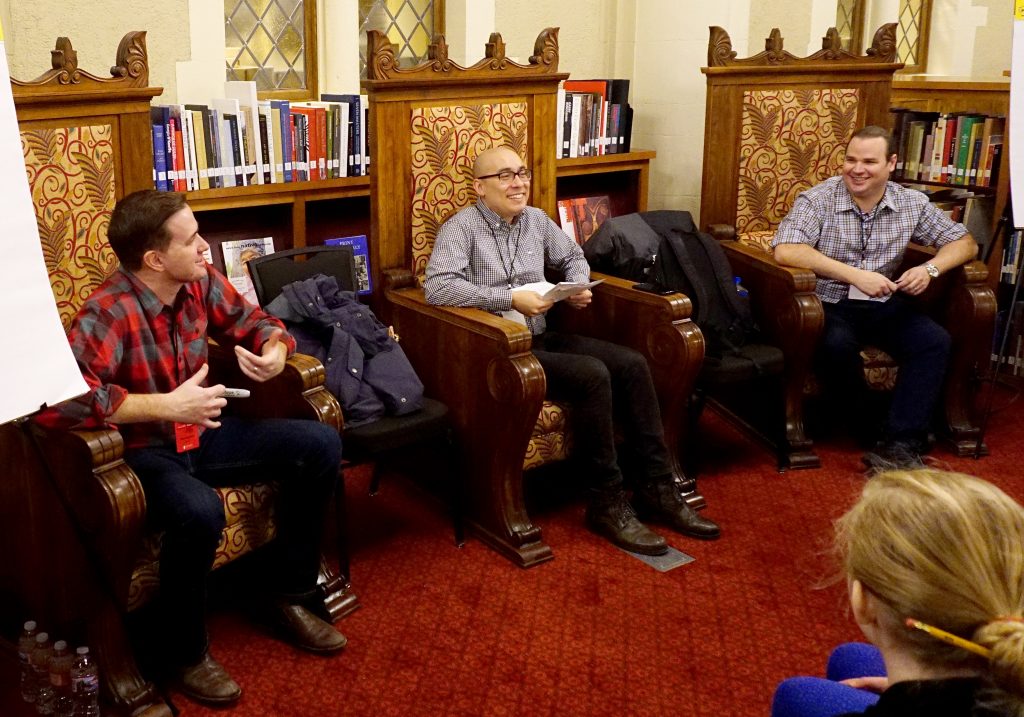
P: Thanks for explaining that. What did you enjoy the most at SCAD?
J: The community. I had so many wonderful mentors and met so many wonderful people that were inspiring and pushed me and just opened the world to me. And taking advantage of every opportunity that SCAD and the city of Savannah gave me.
P: What did you like least at SCAD?
J: The politics of academia. I know every school has its politics, and art school has its own set of politics, especially a big school like SCAD. Some of that is specific to SCAD, but a lot of it is specific to the institutions of private art school. I guess seeing all of that and knowing what went on was very frustrating at times. I don’t know that it could or would ever change.
P: Are there other artists or creative types in your family?
J: My youngest brother is also creative. He does some doodling and writing, but his main creative pursuit is playing bass guitar. He was in a band for a couple of years that toured around. My mom also writes, but it’s mainly academic articles and poetry for herself. My dad loved to draw, but he never pursued it. I honestly forgot this until recently when I found some drawings he did in an old box of his photos.
P: I remember reading in one of your tweets that you went to high school in Kuwait. How did your family end up there? What was it like being a teenager in Kuwait?
J: My dad’s company contracted with the army, so although we weren’t army brats, we moved around every four years like we were. One of those contracts was in Kuwait, so we ended up moving there the winter of my eighth grade year.
The second part of the question is a big one, but I’ll keep it simple. It was probably one of the best and most definitive events of my life. I was pretty depressed and feeling a lot of social pressure of feeling out of place at the beginning of eighth grade. All my friends from elementary school were sort of going their own way. I remember being so upset and angry when we learned we were moving, but I think I also was secretly happy to have a chance to get away because I was pretty depressed.
It was the opportunity of a lifetime to spend my high school years overseas and to see so much of the world and meet people from so many different places. It humbles you.
P: That’s amazing. I’m glad moving to Kuwait provided a fresh start for you, especially at such a crucial time. So, after going to high school in Kuwait, you then went to college at SCAD in Georgia. But then, how did you end up in Portland?
J: My mother got her BA and PhD at the University of Oregon, and we would spend summers with her in Eugene, Oregon, which is about two hours south of Portland. When graduation came around, some buddies of mine and I didn’t really know what we wanted to do or where we wanted to go. I had spent a decent bit of time in Portland from those summers we spent with my mom, and it sounded good to them too, so we packed up a U-Haul and headed west.
P: I was incredibly touched by the two-page comic you posted in your blog about your brother’s suicide. They’re beautiful and powerful panels. Would you ever consider creating a comic or graphic novel based on stories from your childhood or young adult life?
J: That is something I’ve been thinking a lot about now. Publishing is weird because to keep momentum up, you have to start thinking about your next project halfway through the one you’re working on now. I actually have a few ideas in mind for books about my childhood and my experiences that I need to sit down and get in order. Not necessarily autobiographical, but inspired by the events of my youth, especially living overseas. We’ll see if anyone is interested.
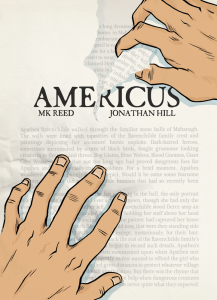 P: Count me in—I’d be very interested in all of these. I enjoyed reading your graphic novel, Americus, written by MK Reed and illustrated by you (First Second Books, 2011). How did that gig happen? What was it like to work with MK?
P: Count me in—I’d be very interested in all of these. I enjoyed reading your graphic novel, Americus, written by MK Reed and illustrated by you (First Second Books, 2011). How did that gig happen? What was it like to work with MK?
J: So Americus started because Greg Means (who runs Tugboat Press) and who is kind of this patron of comics here in Portland had been a fan of MK’s and of mine, and pitched the idea of us working together. MK and I didn’t know each other and we had never worked with someone else before, but we decided to give it a shot.
We ended making what was essentially the first chapter of Americus that could stand on its own as a short story. It ended up running in the seventh issue of Greg’s award-winning anthology, Papercutter, and we were nominated for an Ignatz Award for Best Short Story that year. The long and short of it is that we kept working on it and eventually MK pitched it to Calista Brill, the editor at First Second. It got picked up and that was that.
It was really fun working on Americus with MK. At first I didn’t think I would like working with a writer, but over time I realized how much I loved it. There is a certain freedom that comes with not having to worry about story and just focusing on bringing the storytelling to life. But it took us awhile to learn how to work as together. I always tell people that if you really pay attention when reading Americus you can see two people learning to work with each other. It’s almost like watching two strangers learning how to dance together. In the beginning, they’re stepping on each other’s toes, but at the end, they’re totally in rhythm and are in total unison.
We ended up becoming really good friends and have collaborated on a handful of projects together since Americus, including an upcoming book in First Second’s Science Comics series. We did it on the weather. It should be out in March 2019.
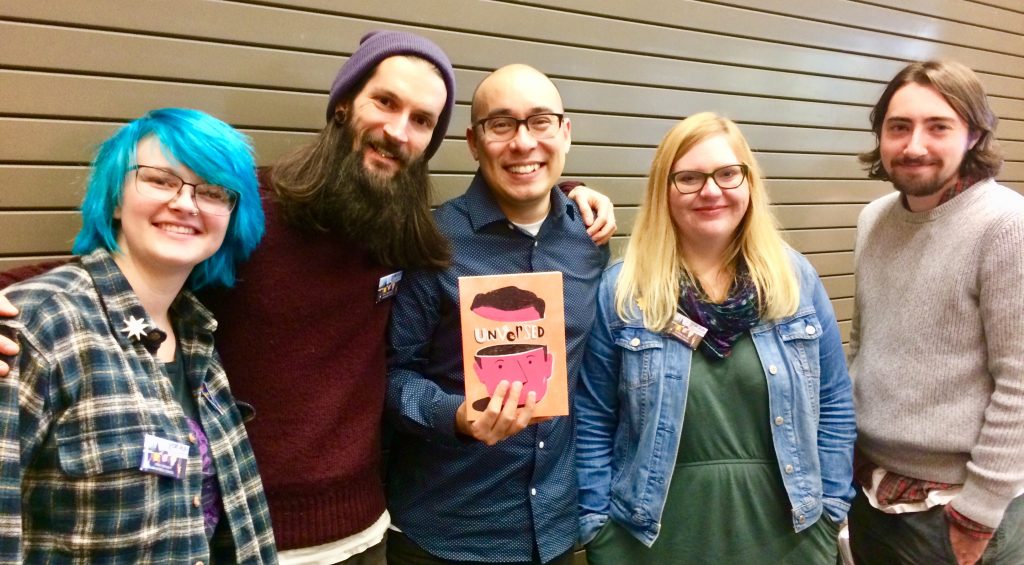
P: You’re a cartoonist and illustrator, but you’re also an educator. How did you become an associate professor at Pacific Northwest College of Art (PNCA)?
J: I’ve always loved teaching. I say now that the only thing that I love more than making comics is teaching comics. I love helping people get the best out of themselves and showing them that they can do it. I had the honor of having mentors that did that for me and I like thinking that I’m putting that same energy into the world.
I had a friend, Meg Hunt, who was teaching at PNCA. She had a lot of students interested in making comics and would send them to me for their final projects or whatever to give them editorial feedback on their work if they were making comics. Eventually she mentioned my name to the head of the illustration department. We started a discussion, and I created some lesson plans and goals that I would have for the class.
I had a lot of experience teaching youth and in continuing education classes for the other art school in town, the Oregon College of Art and Craft, and through Literary Arts’ Writers in the Schools program. It took a couple of years, but eventually, when there was an opening, he asked me to come on board. I taught my first class at PNCA in Fall 2014.
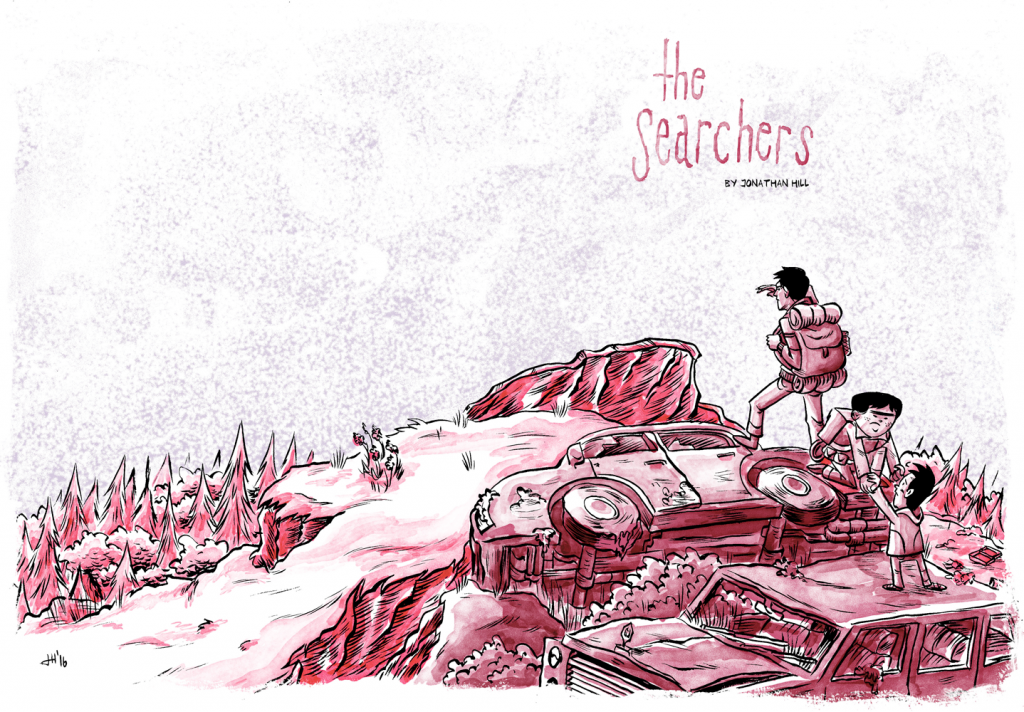 P: What are some of your favorite projects or published works?
P: What are some of your favorite projects or published works?
J: I’m working on my first book right now that I’m both writing and drawing. It’s called The Searchers and will be published by Oni Press. It should be out (fingers crossed) in 2020. It’s really special to me not just because it’s my first book that I’m doing by myself, but also because it’s basically a love letter to my brothers and us growing up.
I am also really proud of the comic I did about my brother’s suicide that you mentioned earlier. I struggled for a long time with his death, but then on the third anniversary of his death, I just sat down and it came out. It only took me a couple of hours and I was crying through the whole thing, but it’s like I just drew it straight from my heart. I think I was able to come to terms with it in the only way I knew how—through comics.
It also helped me flex my more serious storytelling muscles a bit. Lately, I only do comics for kids and teens, and it was nice to know I could step out and do something different. I actually have a comic in the October/November issue of The Believer where I try to tackle my cultural identity. I’m excited (and nervous) to have that out in the world.
P: I can’t wait to read that issue of The Believer, and The Searchers when it comes out. One last question. What would you recommend to a 19-year-old who wants to be a working artist and who’s trying to decide between going to art school or getting a job and doing their art when they can?
J: I think it depends on the person. That’s what’s great about doing art professionally. It’s not like being a doctor or a lawyer where you have to go through a set process to become that thing. Everyone is going to have their own way and there’s no right way.
I understand that might be a frustrating answer to some people. Often people just want someone to tell them, ‘Here. Go do this. That’s the way.’ But it’s not like that. What works for one person won’t work for the next. What matters is your portfolio and what’s in it. Whatever path you choose that helps you get to the place where you do that work and build that portfolio and those professional skills is the right one.
I guess I can only use my own experience, but I loved art school. I needed art school. As I mentioned before, I had done art my whole life and considered it to be the only thing I was halfway good at, but I didn’t take it seriously until art school. I needed art school to show me that. I didn’t have the raw talent that a lot of people do. I wasn’t a prodigy. Art school was an opportunity for me to play, experiment, get better, and to realize that it’s work—it’s hard work.
In a vacuum, I would recommend art school to anybody. Except it’s expensive as hell and totally unnecessary. The biggest things it has going for it are a built-in community and resources. If you can put yourself in a position to do all of those things I mentioned earlier: experiment, learn and grow, push yourself, etc., then you don’t need art school. You can do all of that on your own and there are SO MANY RESOURCES now to help you do that. There are communities, there’s the internet, there’s the school of YouTube. But you need to have a certain drive to seek those things out. It can be harder to be that self-motivated. I surely wasn’t when I was eighteen or nineteen.
I guess the last thing I’ll say is to remember this: there is no timeline for where you are supposed to be or what you are supposed to be doing. It’s easy to look at someone else and say, “Orson Welles made Citizen Kane at 25?!! I’m 25 and I haven’t made Citizen Kane, so I must be a failure!”
No, no, no, no, no. That’s not how life works. You should always be working towards something…whether that is art school, or writing a book, or whatever. You might not get that thing you are working towards, but it will help put you in a place you need to be by working towards it.
Life—like writing, like comics, like art—is a process.
We often want to skip over that process and get to the final object, but that’s not really what’s important. It’s learning and the experience we get in doing so.
P: I love this advice. Thank you so much, Jonathan, for taking the time to answer my questions, and for being open, honest, vulnerable, and encouraging. Really looking forward to reading your comic in the October/November 2018 issue of The Believer, and can’t wait for the release of The Searchers in 2020!
Update: The Searchers is now called Odessa and it released in November 2020.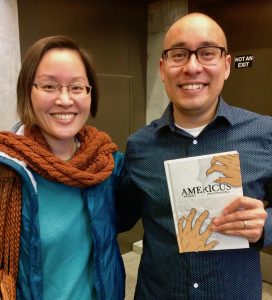
Jonathan Hill is a Vietnamese-American, Ignatz-nominated cartoonist making graphic novels for Oni Press and First Second Books, an associate professor in the illustration department at the Pacific Northwest College of Art, and an instructor of comics and illustration for youth programs at the Oregon College of Art and Craft. He lives in Portland.
To learn more about Jonathan and his creations, visit his site and follow him on Instagram.
Peg Cheng is the author of The Contenders, a middle-grade novel that asks, can enemies become friends? She is currently querying a novel that is a re-imagining of the Snow White fairy tale set in 1980s Seattle. Peg is also the creator of Fear & Writing, a workshop for procrastinating writers from all walks of life.
Great interview! You got some depth in your questions!
Thanks for reading, Stephen! I agree with you, and I owe all of that to Jonathan’s willingness to be open. His willingness to share his experiences with compassionate honesty and vulnerability blew me away.